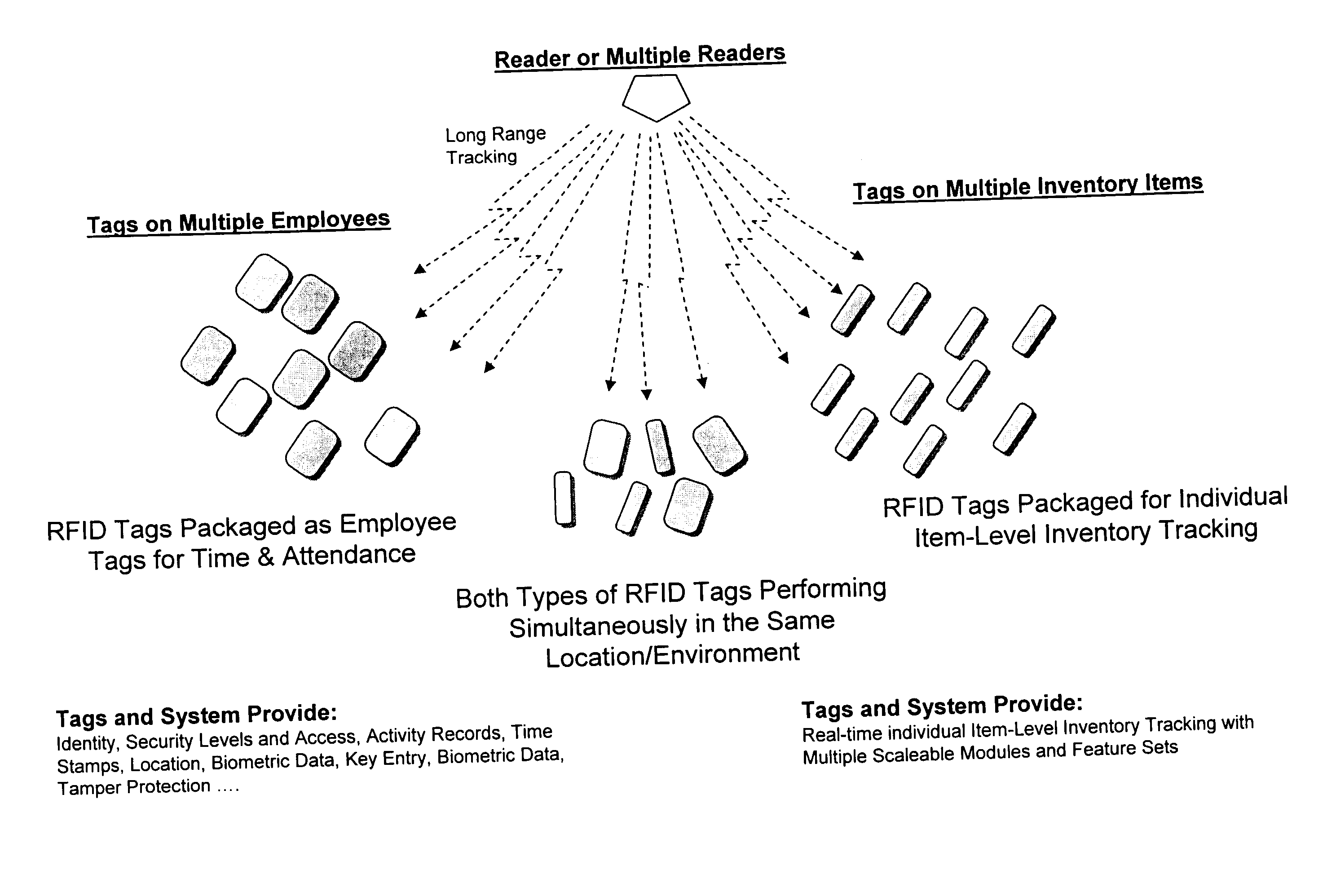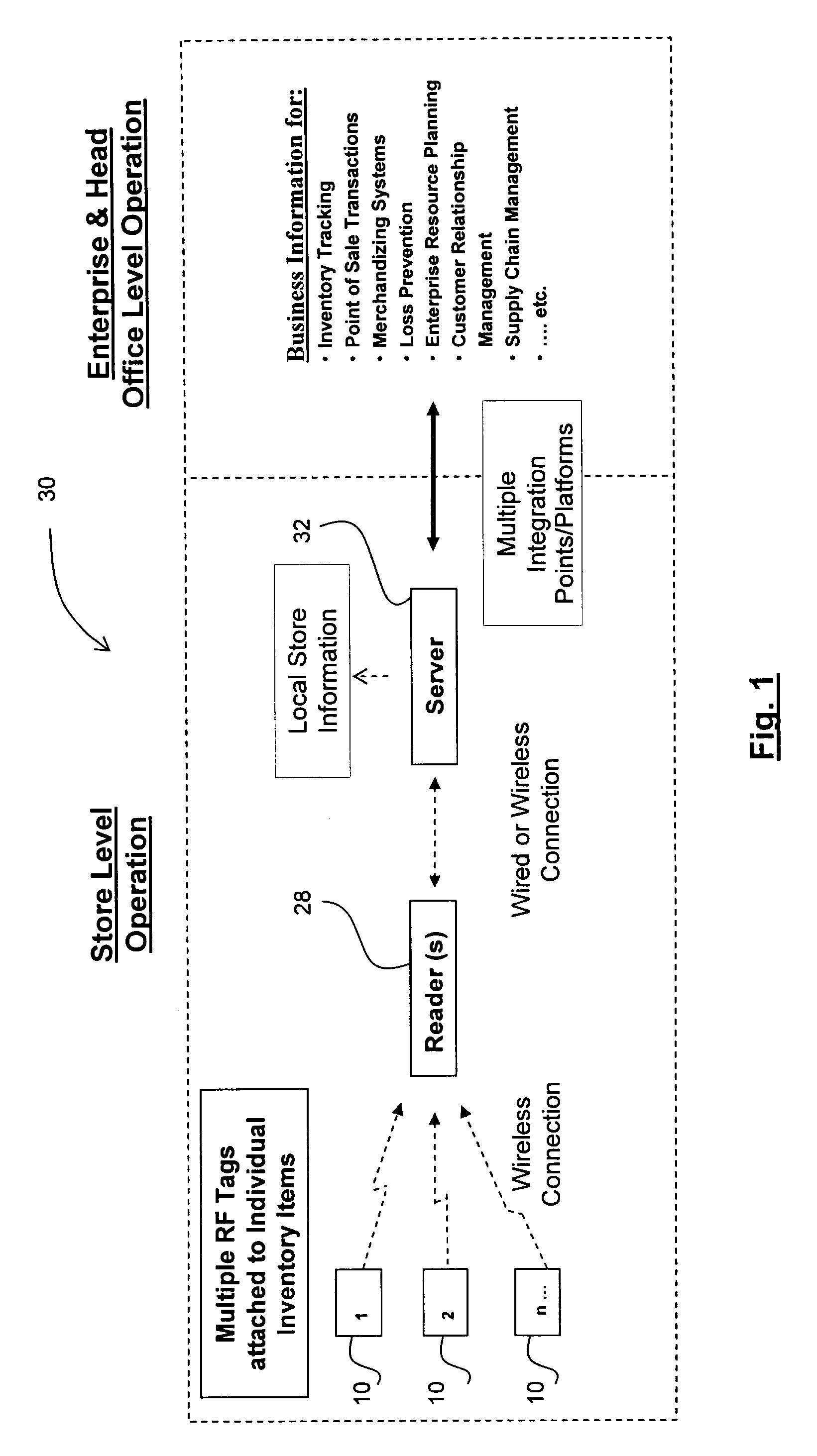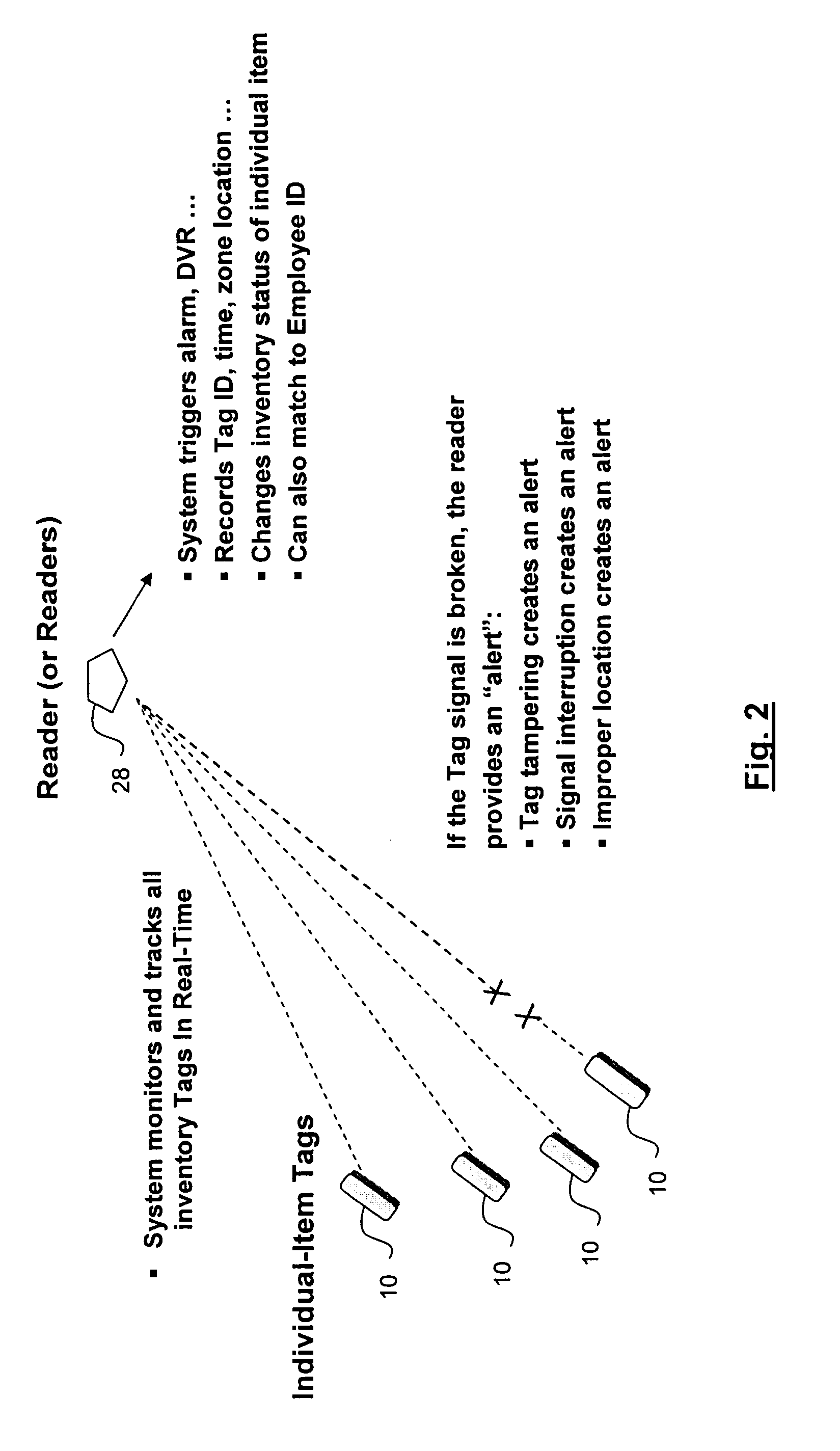By definition, passive tags require an interrogating
signal in order to respond with a transmitted identification code, the limitation being the distance between the tag and the RFID readers.
Also, in order for a passive tag to respond to the interrogating
signal, the RFID reader must be almost parallel to the tag, otherwise the tag will not be able to respond to the reader.
The fact that they can be individually read only when scanned presents an inherent limitation that prevents tags from being individually read in real time, or individually read amongst a plurality of tags in real time.
It therefore follows that, because the individually tagged inventory items cannot be read in real time, they cannot be individually identified or tracked in real time, thus dramatically limiting their direct use for this purpose.
Passive RFID tags are also generally designed to be disposed of and not reused after purchase, also normally necessitating that their cost be added to the cost of the item being sold.
The practice of leaving the tags on the item beyond the
point of sale has also generated concern and protests by some
consumer rights groups on the basis that they may ostensibly be used for involuntary, unauthorized tracking of items post-purchase.
For these and a range of technical issues, passive RFID tags have been largely unsuitable for so-called “item-level tracking” in the retail industry.
They have been attached at the item-level with limitation for specific uses on shelving systems and grocery carts but not for real-time item-level tracking.
Active RFID tags, because they incorporate their own power source and transmitters, which adds cost to the tags, have been hitherto considered too expensive to find practical use in the retail industry.
It is noted that an EAS
system generally reports the unauthorized removal of an inventory item, but does not in itself provide any item-specific inventory information, such as the item's specific identity, or other information related to its removal from inventory.
Nor does the system track, report or automatically change the item's inventory status.
If the unauthorized removal of the item is not detected by the EAS system, the retailer will not know if the item has left inventory until the next physical inventory count is conducted.
Until that time, the retailer does not have reliable information on what is in inventory or not.
Further, EAS systems do not completely eliminate theft due to shoplifting.
Importantly, EAS systems, in fact, do not address the problem of “inventory shrinkage” in broader scope i.e. losses resulting not only from shoplifting, but also those due to employee theft, fraud, spoilage /
spillage of stock, or from accounting or inventory counting errors.
As such, being focussed almost solely on the shoplifter (and exit points only) component of inventory shrinkage, EAS systems in themselves do not provide a Loss Prevention solution for retailers i.e. reducing the amount of total theft and shrinkage within a business.
Loss Prevention therefore continues as an ongoing and very serious imperative for retailers.
However, the system described in this
patent application, which is not retail-specific, does not provide anti-theft capability.
Moreover, such a system does not provide a real-time tracking of the assets.
Even if some of the above described methods and systems provide good solutions for “asset management” and yet others for preventing theft, several issues still remain that prevent them from being used for identifying and tracking inventory items.
Indeed, none of the above-mentioned patents or patent applications provides a real-time,
individual item-level inventory identification and
tracking system particularly adapted for the retail industry while providing Loss Prevention, i.e. addressing the broad retail shrinkage issue in totality.
Moreover, most of the solutions mentioned above have to be used in highly controlled “cooperative” environments and are thus not well adapted for
individual item-level identification and tracking across the complete retail supply chain, including the storefront, which are largely “uncooperative environments”.
 Login to View More
Login to View More  Login to View More
Login to View More 


